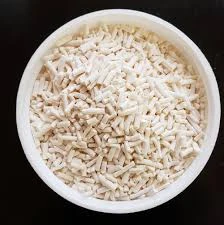
e392 food additive
Understanding E392 A Food Additive in Focus
In the realm of food additives, E392 has gained attention due to its unique properties and applications. Commonly known as rosemary extract, this natural additive is derived from the leaves of the rosemary plant (Rosmarinus officinalis). As a food preservative, E392 serves several critical functions that enhance both the quality and safety of food products.
The Nature of E392
E392 is classified as an antioxidant. Antioxidants are substances that prevent or slow down the oxidation process, which leads to the deterioration of food products. Oxidation can result in various undesirable effects, such as rancidity in fats, color changes, and the loss of nutritional value. Given the increasing consumer demand for natural ingredients in food production, E392 has emerged as a preferred option for manufacturers seeking to minimize synthetic additives.
Functions of E392 in Food Preservation
The primary function of E392 is to extend the shelf life of food products. By inhibiting oxidation, rosemary extract helps maintain the freshness and flavor of foods, particularly those high in fats and oils. This property is especially valuable in products like salad dressings, margarine, and meat products. The ability of E392 to stabilize lipids makes it a crucial ingredient in the food industry.
Moreover, E392 is recognized for its antimicrobial properties. Research indicates that rosemary extract can help inhibit the growth of certain bacteria and molds, further enhancing food safety. This characteristic complements its antioxidant effects, allowing food producers to not only preserve quality but also reduce the risks associated with foodborne pathogens.
e392 food additive

Health Benefits and Consumer Perception
In addition to its preservative qualities, E392 is often regarded as a healthful additive. Rosemary has been associated with various health benefits, including anti-inflammatory and cognitive-enhancing properties. These perceived benefits align well with consumer trends favoring natural and functional ingredients in food. As consumers become more health-conscious and informed about food additives, the presence of E392 in a product can positively influence purchasing decisions.
However, it's worth noting that while E392 is derived from a natural source, some individuals may have sensitivity or allergies to compounds found in rosemary. Consequently, food manufacturers are required to label products containing E392 clearly, allowing consumers to make informed choices based on their dietary needs.
Regulatory Aspects
E392 is approved for use in many regions, including the European Union, where it is listed as safe for consumption within specified limits. The food industry must adhere to strict regulations regarding the use of food additives, and E392 is no exception. These regulations are in place to ensure that the levels of additives used in food products do not pose a risk to public health.
Conclusion
As the food industry continues to evolve, the focus on natural preservatives like E392 showcases a shift towards healthier, safer food production practices. Rosemary extract serves as a multifunctional additive that not only preserves the quality of food but also caters to the growing consumer demand for transparency and healthfulness in food ingredients. As we look to the future, the relevance of E392 is likely to increase, playing an essential role in maintaining the integrity of food products while aligning with contemporary consumer preferences. As always, informed consumers will benefit from understanding the nature and effects of the additives that may be present in their everyday foods.
-
Pure Sodium Dichloroisocyanurate Dihydrate | Powerful DisinfectantNewsAug.29,2025
-
Industrial Chemicals: Quality & Purity for Every IndustryNewsAug.28,2025
-
Nitrile Rubber Honoring Strict Production StandardsNewsAug.22,2025
-
Aspartame Ingredients Honoring Food Safety ValuesNewsAug.22,2025
-
Fertilizer for Balanced Plant NutritionNewsAug.22,2025
-
Cyanide Gold Processing with High Purity AdditivesNewsAug.22,2025
-
Formic Acid in Textile Dyeing ApplicationsNewsAug.22,2025
Hebei Tenger Chemical Technology Co., Ltd. focuses on the chemical industry and is committed to the export service of chemical raw materials.
-

view more DiethanolisopropanolamineIn the ever-growing field of chemical solutions, diethanolisopropanolamine (DEIPA) stands out as a versatile and important compound. Due to its unique chemical structure and properties, DEIPA is of interest to various industries including construction, personal care, and agriculture. -

view more TriisopropanolamineTriisopropanolamine (TIPA) alkanol amine substance, is a kind of alcohol amine compound with amino and alcohol hydroxyl, and because of its molecules contains both amino and hydroxyl. -

view more Tetramethyl Thiuram DisulfideTetramethyl thiuram disulfide, also known as TMTD, is a white to light-yellow powder with a distinct sulfur-like odor. It is soluble in organic solvents such as benzene, acetone, and ethyl acetate, making it highly versatile for use in different formulations. TMTD is known for its excellent vulcanization acceleration properties, which makes it a key ingredient in the production of rubber products. Additionally, it acts as an effective fungicide and bactericide, making it valuable in agricultural applications. Its high purity and stability ensure consistent performance, making it a preferred choice for manufacturers across various industries.





